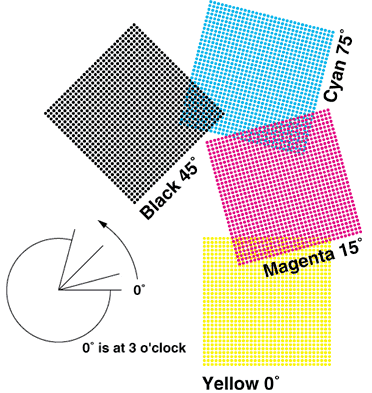

- #HALFTONES WITH SEPARATION STUDIO MAC OS#
- #HALFTONES WITH SEPARATION STUDIO PLUS#
- #HALFTONES WITH SEPARATION STUDIO SERIES#
For the purposes of this article, we’ll leave the settings at SWOP Uncoated. If we have a colorimeter or spectrophotometer at our disposal, now is the time to measure L*a*b* values for each printed ink color and record the correct values in Photoshop under Ink Colors (selected from the Ink Options window).
#HALFTONES WITH SEPARATION STUDIO MAC OS#
This is accomplished in both Windows and the Mac OS by accessing >File>Color Settings>CMYK Setup ( Figure 1).

(For purposes of this article, we’ll focus on version 5.x.) Working in six colors requires us to begin by making some adjustments to the basic separation setup dialog box. Unless we are working with very high-end separation software, we will likely use Adobe Photoshop to make our separations. The separation subject for our discussion will be the familiar Kodak Q60 test image. These are among the most problematic image types for screen printers, with shadows closing up and highlights suffering dot gain and excessive moiré as dot size fades to 0%. Additionally, because we use process-color derivatives in six-color reproduction, many colors the human eye can perceive will still remain out of gamut and impossible to reproduce, especially very bright greens, purples, and violets/magentas.įor the sake of simplicity, we will focus on six-color separations for images with fairly dark shadow details and a great deal of highlight color and highlight tertiary color. The more extreme the details in light or dark areas of our images, the more care and attention we have to apply to assure success. Also keep in mind that the dual-colorant approach is not a universal panacea–it is subject to limitations just as any other printing method. Note that both extremes of light and dark rarely occur in the same image–typically images exhibit problems at just one end of the tonal range or the other. Natural images, such as flowing water, rocks, stone, beach sand, feathers, bark, shells, fur, clear gemstones, and ice are other good candidates for the dual-color approach. Examples of such images include watercolor washes, shading on white eggs, lace, and detail in white clothing, clouds, or baked goods. The other category of images are those with faint highlight details or tertiary color in the lightest areas, images that are often found in P-O-P displays and similar promotional graphics. To achieve these colors with traditional process color, we must add black to the separation, which tends to overpower subtle tones in the image, effectively killing the tones we are after.

The first variety are images with very dark details and full, rich colors that are difficult to achieve with traditional process color (e.g., dark leather, deep wine, dark bottle glass, walnut, mahogany, and other dark woods). Two types of images are appropriate for dual-channel printing.

We’ll review separation techniques and look at important issues like gray balance, splitting color channels, halftone line counts and angles, proofing, using DCS 2.0 for output, print order, ink consumption, and registration.īefore tackling the separation process, it’s a good idea to determine if the image we’re working with is suited for six-color reproduction. Now the rubber meets the road as we move from the theoretical side of six-color printing to the practical by investigating the production techniques and methods necessary to apply dual-channel separations.
#HALFTONES WITH SEPARATION STUDIO PLUS#
We considered the benefits of using an expanded ink set comprising black, yellow, plus dual-channel separations for light and dark cyan and magenta, and we learned about the basic changes this solution brings to our printed images. We reviewed the problems that come with four-color-process printing and looked into an unconventional solution to the moiré, dot gain, and tonal compression that plagues us: six-color-process reproduction.
#HALFTONES WITH SEPARATION STUDIO SERIES#
However, as we learned in Part 1 of this series last month, taking the traditional four-color approach to process-color reproduction accentuates the limitations of our printing method and restricts the spectrum of colors we can achieve on press. Accurately reproducing a broad range of colors is the goal of every screen printer.


 0 kommentar(er)
0 kommentar(er)
